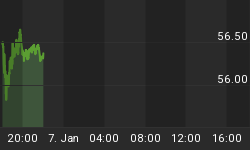Summer is here, and with it comes sultry weather, vacations at the beach, and sometimes the phenomenon known as "summer doldrums" in the stock market.
Why summer doldrums this year when we didn't have them in summer of '03? Because for one thing, this is an even numbered year in the alternate 2-year cycle and even numbered years are typically less bullish (or in some cases outright bearish) compared to odd numbered years. It's also a 10-year cycle bottom year. And fundamentally speaking, the Fed's dramatic slowdown in M3 money supply from last year is now hitting the markets with full impact. That's the bad news. The good news is that the 12-year cycle bottom from late 2002 and the more recent cycle bottom in earlier May should provide enough of a lift to keep the bearish forces from completely taking over this summer. Net effect: the dreaded trading range and with it those listless summer doldrums.
In 10-year cycle bottom years (e.g., 1964, '74, '84, '94, '04) the Dow tends to move sideways when measured from January-December. The only time this wasn't true in the last four 10-year cycle bottoms was in 1974, when the 40-year cycle bottomed along with the 10-year cycle that year. As long as no other long-term cycle is coming down hard, the 10-year cycle nearly always brings about a decided trading-range-type pattern in the major indices. This is because the 20-year cycle is peaking while the 10-year cycle is bottoming simultaneously, thus, as the shorter of these two cycle is down, the other is still up.
Here are some charts of the Dow in previous 10-year cycle years. Let's start with 1984, which just happened to be an election year -- the last 10-year cycle bottom year when a presidential election was held in the U.S. Note the net sideways movement of the Dow when measured from start to finish in 1984.

Most people remember 1994 as being a minor recession year, as indeed it was. The Dow that year was also net sideways for the year when measured from start to finish. The reason it wasn't any worse is because the dreaded 12-year cycle (which always bottoms with emphasis, a la' late 2002) had bottomed a few years earlier in 1990. The year 1994 was the last year of the early '90s laggard economy/stock market. Beginning in 1995, the Dow took off to the upside and never looked back for the next five years, with the U.S. economy soaring along with it.

Looking at the charts, I'd have to say the price line of the Dow to date in 2004 has been a lot livelier than many investors give it credit for. Look at the Dow chart below, which shows prices year-to-date, and I think you'll agree. There is very strong underlying support for the stock market, which isn't likely to be broken anytime soon. There is enough Fed-induced liquidity to see us through the anticipated summer doldrums and later decline into the 10-year cycle low in early autumn. In our present case, the 12-year cycle bottomed in 2002, as mentioned previously. So that pressure has been lifted off the equities market. That leaves only the pressure of the falling 10-year cycle, and that should be lifted in the fall of this year. The next major longer-term cycle doesn't bottom until 2006, which means late 2004-through 2005 should be net bullish for the stock market and U.S. economy.

Incidentally, one of tne of the big factors influencing this November's presidential elections is the 10-year cycle, although almost no one is talking about it. This cycle could exert just enough pressure against the economy to make it a hot-button political issue heading into the elections. This obviously would not bode well for Bush. Along those lines, Stock Trader's Almanac conducted a study in which they found that the recurring quadrennial policity/stock market cycle going back 170 years has been a big harbinger for presidential election years. To quote STA, "What are the prospects for the incumbent Republicans in 2004? One obstacle for the GOP is that no president who failed to win the popular vote won a second term. John Quincy Adams, a sone for a former president, and Benjamin Harrison, both failed in their bids for reelections...
"Another negative facing the Administration is that popularity during wartime often fades by the time the war ends, or seems to be ending, and the next presidential election rolls around." STA points out that the Democrats lost power after WWI (1920), Korea (1952), and Vietnam (1968). The Republicans gave up the White House in 1992, despite their very high ratings during and after Desert Storm, as STA points out. As STA states, "To beat the odds in 2004, the Republicans will need a growing economy and a peaceful Middle East."















